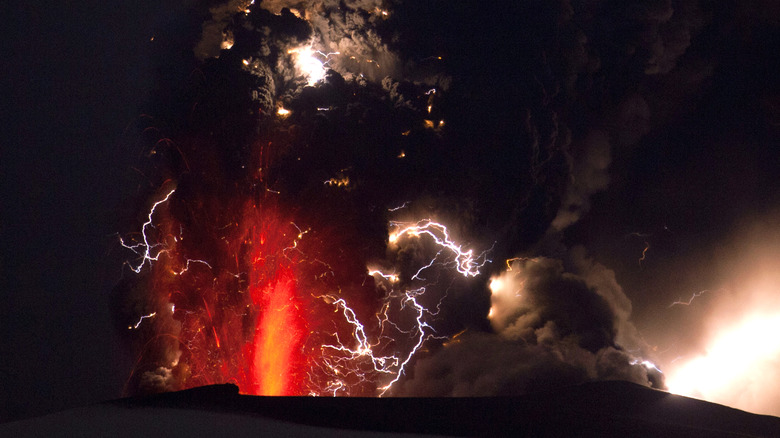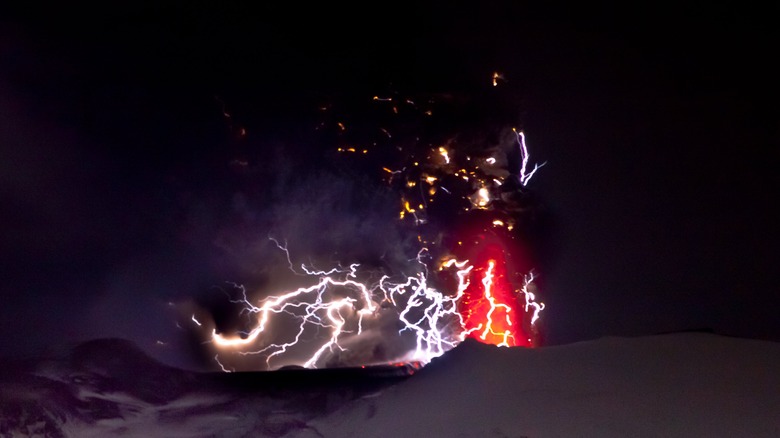What We Know About The Natural Phenomenon Of Volcanic Lightning
When extremely hot molten rock navigates its way along the Earth's crust and out through its surface, it marks the start of a volcanic eruption. On occasion, when an eruption occurs slowly, it features a visual phenomenon known as volcanic lightning.
Volcanic lightning occurs when a significant amount of rock, dust, and ash, along with lava, is expelled, and the dense particles form volcanic plumes. The rubbing together of particles causes friction, which results in both the addition and subtraction of electrons, becoming electrically charged. Each charged particle ascends, and the positive charges grow apart from the negatively charged ones. When the charge separation reaches a certain threshold in the plume, lightning forms to connect the positive and negative charges (via National Geographic).
The stunning display of force is not a regular occurrence, however, preceding or during an eruption. This volcanic storm typically takes place in volcanoes with large ash plumes that tend to occur in the pre-stages of an eruption and also where molten lava has already increased the temperature (via Forbes).
A single lightning strike emits 100,000,000,000,000,000,000 (10 to the 20th) charged electrons, according to Forbes. The heat and friction make for the constant fluctuation of atoms and their ability to both gather and drop electrons, which creates ions. The static electricity given off as isolated charges results in the creation of lightning. It is the fusion of ash with an expel of flash!
Volcanic lightning can warn of potential eruptions
According to Live Science, in 2016, there were two major scientific studies to determine the cause of volcanic lightning. The first hypothesis is the aforementioned static electricity. The other is a previously believed stratosphere hypothesis, in which jolts were being produced because of the clash of heat from the volcano and ice crystals above the Earth's surface.
Scientists have determined that volcanic lightning typically occurs at the beginning of a volcanic eruption due to the dense particles and the smoky plume in the stratosphere, which are activities that typically happen at the beginning (via Discovery).
Because of these studies, scientists now believe they have another tool for tracking and monitoring volcanic activity and eruptions. "Fills a niche that no other volcanic eruption monitoring tool can cover," said volcanologist Alexa Van Eaton, per National Geographic.
Volcanic activity can be detected using data derived from the World Wide Lightning Location Network (WWLLN), which is spearheaded by 50 different universities and various institutions around the world. It utilizes satellite imagery and data to determining peak lightning activity during varying phases of an eruption, helping first responders coordinate evacuations (via National Geographic).

